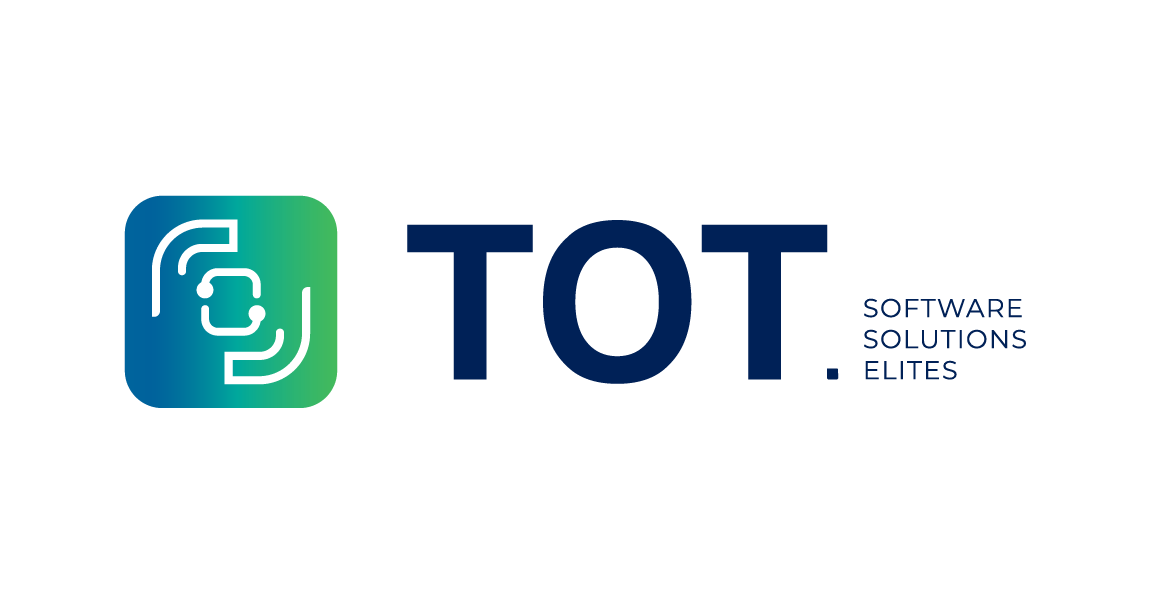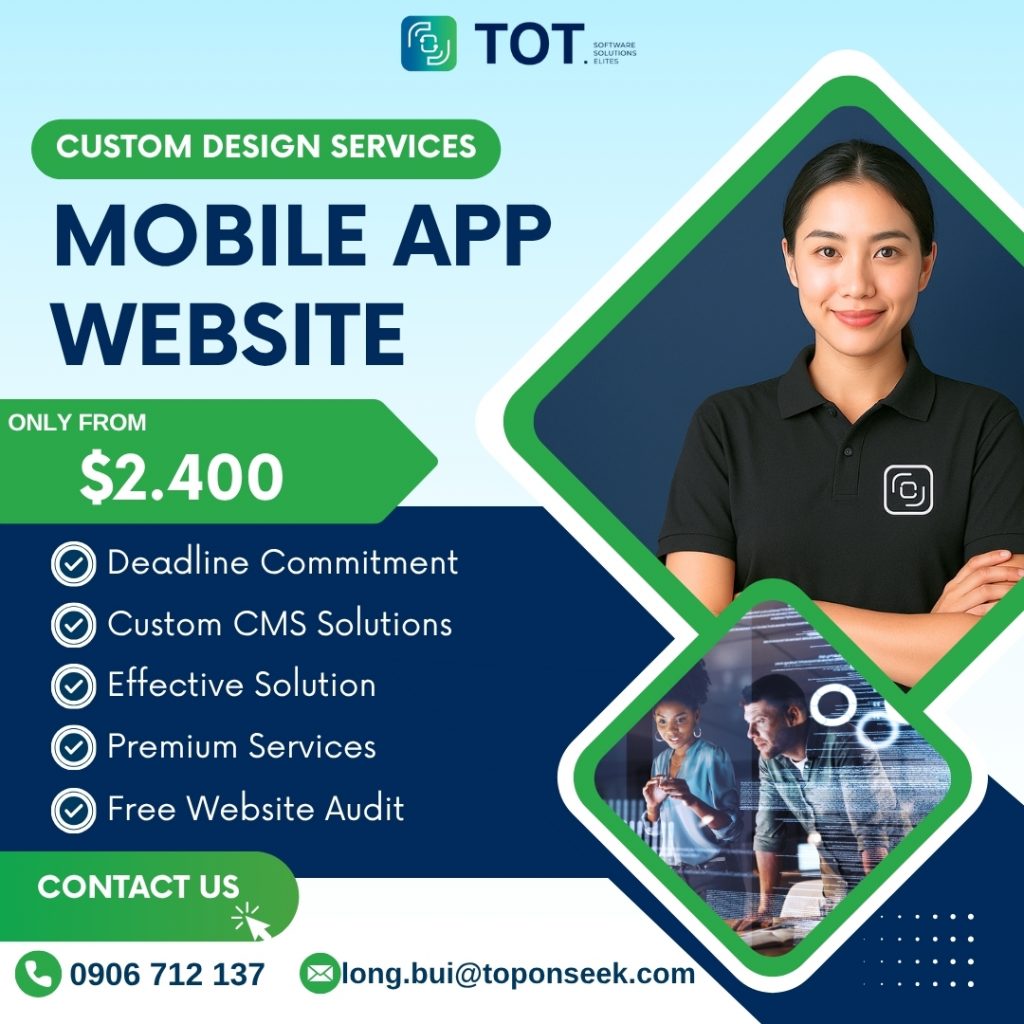A mobile app development project plan is a strategic roadmap that guides your app from idea to launch. It clarifies goals, defines user needs, aligns teams, and ensures resources are used effectively. A solid project plan also reduces risks and keeps development on schedule. In this guide, TOT will show you how to build a clear and actionable plan for a successful mobile app. Let’s break down each step to help you move from concept to execution with confidence.
- Top 10 Web Agency Offshore Companies for Global Businesses
- Top 12 Web Design Agencies in Vietnam – Trusted & Professional
- Top 15 Software Outsourcing Company in Vietnam
- Top 10 IT Outsourcing Companies in Vietnam [Most Updated 2025]
- Software Development Company in Vietnam – Top 10 Best Choices for 2025
Why Invest in App Development?
Investing in mobile app development has become crucial for businesses seeking to stay competitive in a mobile-first world. As of 2025, mobile users account for about 62.5% of global internet traffic, and consumers spend more than 4.5 hours per day on mobile applications across various categories, including e-commerce, health, finance, and entertainment. This shift in user behavior makes mobile apps one of the most effective tools for improving customer experience and driving revenue growth.
Mobile apps provide several business advantages:
- Direct communication through push notifications, in-app messages, and personalized experiences.
- Higher engagement and retention compared to mobile websites.
- Stronger brand loyalty, as apps remain constantly accessible on users’ devices.
- Better performance, offering faster load times, offline capabilities, and smoother interactions.
For companies looking to scale, mobile apps also generate valuable insights through behavioral analytics, which helps businesses improve features, personalize services, and optimize operations.
>> Read more:
- Custom Software Development in Ho Chi Minh City – Professional, Multi-Platform Solutions
- Custom Software Development in Hanoi – Professional and Affordable Solutions
What Is a Mobile App Development Project Plan?
A mobile app development project plan is a structured roadmap that outlines all stages of the mobile app development lifecycle—from ideation to launch and ongoing maintenance. It ensures clear communication, reduces risks, controls costs, and keeps the entire team aligned and focused.
A strong project plan includes:
- Business goals and user needs
- Core product features (MVP)
- Technical requirements and platform choices
- Design and development workflow
- Budget and timeline
- Testing and quality assurance
- Deployment and post-launch strategy
In other words, it serves as a blueprint that guides designers, developers, marketers, and stakeholders to build a successful mobile app efficiently.
Step-by-Step Guide to Building a Mobile App Development Project Plan
Creating a successful mobile app begins with a clear, well-structured project plan. This roadmap helps teams stay aligned, manage resources effectively, and reduce risks throughout development. A strong plan typically moves through several key phases—from defining the strategy to launching and maintaining the final product.
Strategy and Planning
A solid strategy ensures that your app is viable, user-focused, and aligned with business objectives.
- Define purpose and goals: Begin by clearly defining the app’s purpose, target audience, and success metrics. Identify what problem the app solves, who will use it, and what business KPIs it must improve—such as increasing sales, improving engagement, or automating workflows.
- Conduct market research: Study your competitors and analyze their strengths, weaknesses, and user feedback on platforms like Google Play, App Store, G2, or Capterra. Evaluate your target audience’s behaviors, expectations, and pain points using surveys, interviews, and analytics tools. This research helps define your unique value proposition.
- Outline features: List your core MVP features, those necessary for the app to function and deliver value. Avoid adding too many features too early. Instead, create a feature roadmap for future updates based on user feedback and growth strategy.
- Choose a platform: Decide whether to build an iOS native app (Swift), an Android native app (Kotlin), or a Cross-platform app (Flutter, React Native). Your choice depends on budget, features, development speed, and target audience device preferences.
- Set the budget and timeline: Estimate development costs based on design, development, testing, integrations, and maintenance. Define a realistic timeline with milestones for MVP delivery, beta testing, and final launch.
- Develop a marketing plan: Outline acquisition channels, including social media, app store optimization (ASO), paid ads, influencer marketing, and email campaigns. Effective marketing ensures your app gains traction from the very start.
Design and Development
Once the strategy is clear, the next step is to translate ideas into a functional, visually appealing product.
- Design UI/UX: Create wireframes, user flows, and interactive prototypes that outline the user’s journey. UI/UX designers utilize tools such as Figma, Sketch, or Adobe XD to craft intuitive, accessible, and visually consistent interfaces. The goal is to maximize usability and create a seamless experience across all screens.
- Set up development: Choose your technology stack, frameworks, and third-party integrations. Assemble the development team, including front-end, back-end, mobile developers, QA engineers, and DevOps specialists.
- Develop the app: Developers build the app’s functionality, database, APIs, and integrations. Most modern teams employ the Agile methodology, enabling them to deliver features in iterative sprints, respond quickly to changes, and continuously improve the product.
Testing and Launch
- Conduct quality assurance testing: QA teams run functional testing, usability testing, performance testing, and security testing across multiple devices and operating systems. This process ensures the app works consistently for all users.
- Deploy the app: Once the app is submitted to the App Store and Google Play Store for distribution. This involves meeting each platform’s guidelines, preparing metadata, screenshots, and descriptions.
- Launch and market: Execute your marketing strategy, including promotions, user acquisition campaigns, ASO optimization, and launch announcements to attract early adopters.
Post-launch
Monitor and maintain: Track user behavior, technical performance, and feedback using analytics tools to ensure optimal results. Provide continuous updates, fix issues, and introduce new features. A well-maintained app increases retention and strengthens long-term value.
Different Types of Roadmaps for Mobile App Development
A development roadmap serves as the strategic blueprint that guides your app from concept to launch. It helps teams visualize priorities, manage timelines, and stay aligned on goals throughout the entire development lifecycle. Because every project has unique needs, multiple roadmap formats can be used, depending on complexity, team structure, and development methodology. Below are the most effective types of mobile app development roadmaps currently in use.
Feature-Based Roadmap
A feature-based roadmap outlines all the features that will be developed and released over time. Instead of focusing on deadlines or sprints, this roadmap prioritizes what will be built. It’s ideal for teams that want a high-level overview of functionality and a clear direction for both MVP and future enhancements.
This approach works well when teams need flexibility to adjust timelines without disrupting the overall feature strategy. It also helps stakeholders understand which capabilities will be delivered first, making it easier to manage expectations and plan marketing efforts.
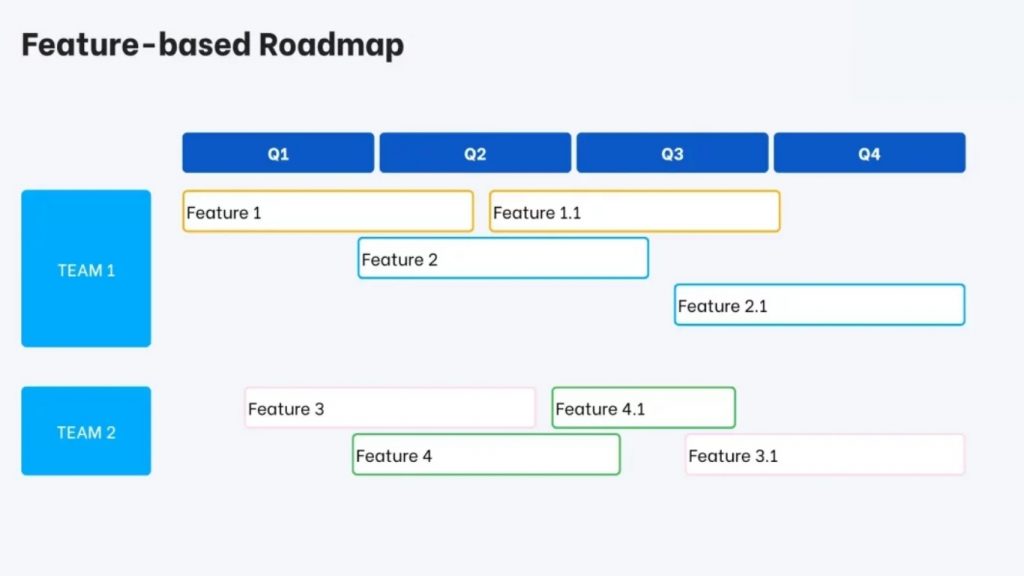
Goal-Oriented Roadmap
With a goal-oriented roadmap, the focus shifts from features to desired outcomes. Instead of asking “What are we building next?” it asks “What are we trying to achieve?”
Examples of goals include improving user onboarding, increasing retention, boosting engagement, or reducing app load times. This roadmap encourages teams to think strategically and align development efforts with broader business objectives. It also ensures that every feature introduced directly contributes to achieving a measurable goal.
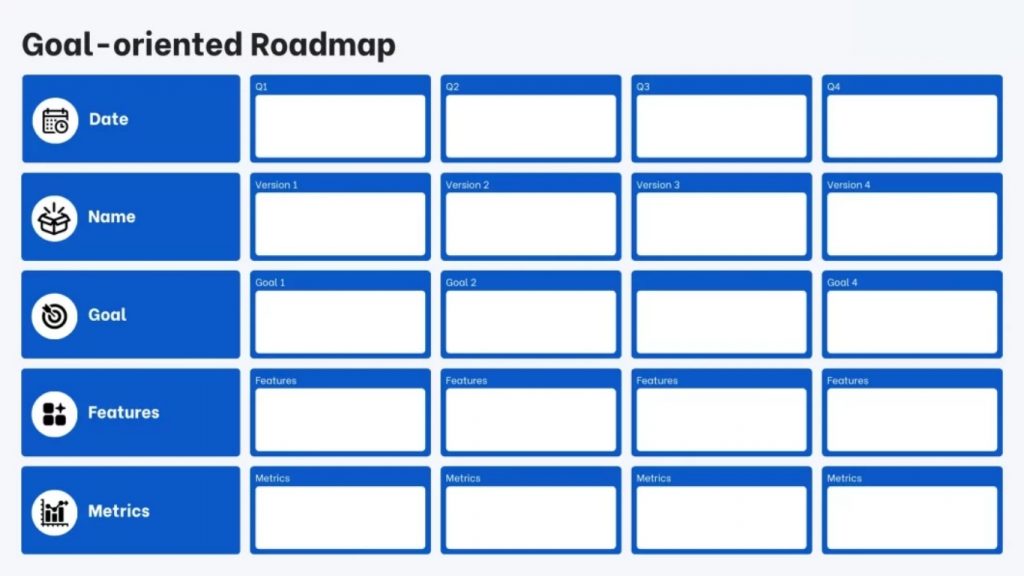
Timeline-Based Roadmap
A timeline-based roadmap organizes the project into time segments, such as monthly, quarterly, or yearly. It clearly indicates when each development phase, feature release, or milestone will take place.
This roadmap is excellent for enterprise-level projects or those with strict deadlines, such as product launches tied to marketing campaigns. While it provides strong overall visibility, it requires careful planning and may become challenging to maintain if the project scope changes frequently.
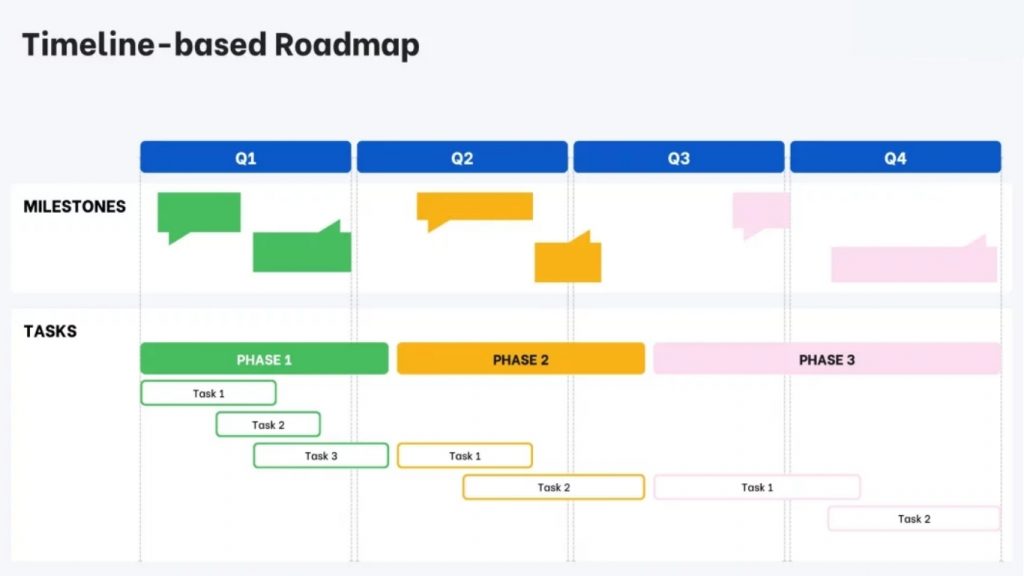
Sprint Plan Roadmap
Designed for Agile development teams, a sprint plan roadmap breaks the project into short cycles called sprints. Each sprint typically lasts 1–2 weeks and includes a prioritized list of tasks and features from the backlog.
This roadmap supports rapid iteration, continuous improvement, and early user feedback. It also provides structure while remaining flexible—teams can reassess priorities at the end of each sprint and adjust plans based on progress, testing results, or new insights.
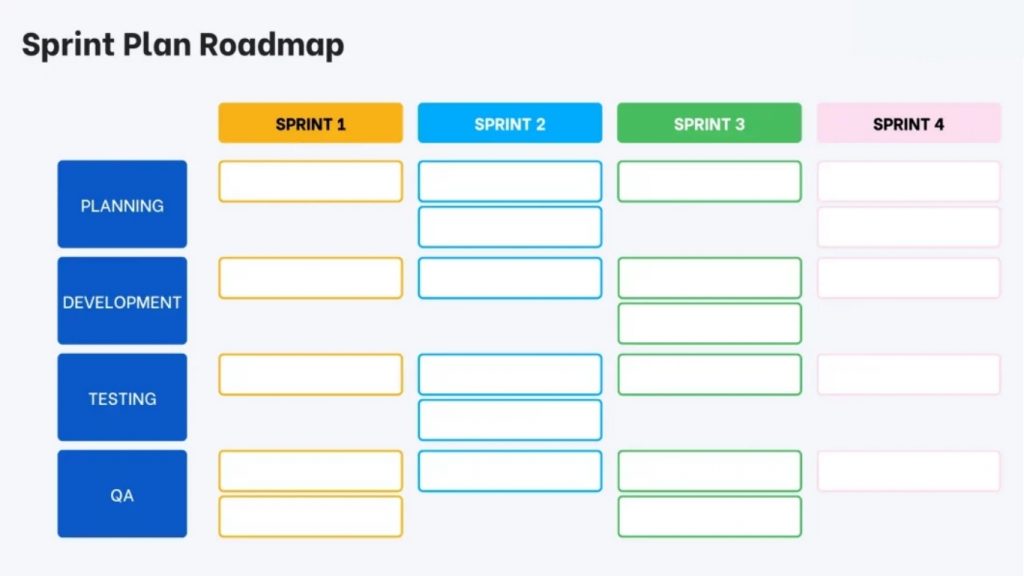
Kanban Roadmap
A Kanban roadmap visualizes work in a flowing board format with columns such as “Backlog,” “In Progress,” “Review,” and “Completed.” This roadmap is ideal for teams that want constant visibility without rigid sprint structures. It makes it easy to track progress in real time, identify bottlenecks, and optimize the workflow. Kanban roadmaps are especially useful for long-term maintenance projects, continuous delivery pipelines, or teams handling multiple ongoing tasks simultaneously.

Best Practices for a Successful Mobile App Development Roadmap
A roadmap is only effective when it is structured well and managed continuously. To get the most value from your roadmap, regardless of the format you choose, it needs to be clear, adaptable, and strategically aligned with business and user needs. Below are the essential best practices to ensure your roadmap drives success.
Setting Realistic Timelines & Milestones
Establish timelines that accurately reflect the project’s true complexity, team capacity, and potential technical risks. Break your roadmap into achievable milestones so progress can be measured effectively. Realistic timelines prevent burnout, reduce rushed releases, and result in higher-quality outcomes. Milestones also help stakeholders track progress and ensure accountability across teams.
Keeping the Roadmap Flexible for Changes & Updates
Even with the most detailed planning, mobile app projects evolve. User behavior changes, new technologies emerge, and unexpected challenges can arise. A successful roadmap must remain flexible, ready to be updated as new information emerges. This adaptability ensures that the development process remains relevant and aligned with current priorities, instead of being locked into outdated assumptions.
Aligning Teams: Collaboration Between Developers, Designers, and Stakeholders
A roadmap becomes far more effective when everyone involved shares the same vision. Designers, developers, QA testers, product managers, and business stakeholders must be aligned from the start. Regular collaboration improves handoff quality, reduces misunderstanding, and accelerates development. When teams collaborate closely, the roadmap evolves into a single source of truth for the entire project.
Regular Feedback Loops & User Insights
Successful apps are built on real-world feedback. Incorporating user insights, analytics, and testing results into your roadmap ensures that priorities reflect what users actually need—not assumptions. Continuous feedback loops help validate decisions, identify opportunities for improvement, and guide future iterations. This results in an app that performs better and delivers long-term value.

Common Mistakes to Avoid When Creating an App Development Roadmap
A well-structured roadmap can accelerate development, improve team collaboration, and ensure your app launches successfully. However, many teams encounter bottlenecks due to planning errors that could have been avoided. Understanding these common mistakes will help you create a more accurate, flexible, and actionable roadmap.
Overcomplicating the Roadmap with Too Many Features Upfront
Packing the roadmap with excessive features early on can overwhelm teams and slow development. When everything is marked as a priority, nothing truly is. This mistake leads to unclear focus, ballooned budgets, and delays. Instead, emphasize an MVP-first approach, prioritize core features that deliver immediate value, and gradually build out enhancements based on data and user feedback.
Ignoring Market Validation & Skipping MVP
Skipping the validation stage is one of the fastest ways to waste time and resources. Without real user feedback, you risk building features no one needs or wants. An MVP allows teams to test hypotheses, gather insights, and refine the roadmap. Market research, competitor analysis, and early prototypes are essential to shaping a successful product direction.
Lack of Proper Budgeting & Risk Assessment
An app roadmap becomes unreliable when teams don’t account for project risks or financial limitations. Unexpected costs—such as third-party integrations, testing tools, or post-launch support—can derail the project. Conducting a thorough risk assessment and preparing contingency plans ensures more accurate budgeting and smoother project execution.
Not Factoring in App Maintenance & Updates
Many teams plan only until launch, forgetting that long-term maintenance is just as important. Updates, new OS versions, security patches, and bug fixes require dedicated resources. A strong roadmap includes a clear plan for post-launch monitoring, regular updates, and performance optimization to keep the app relevant and competitive.
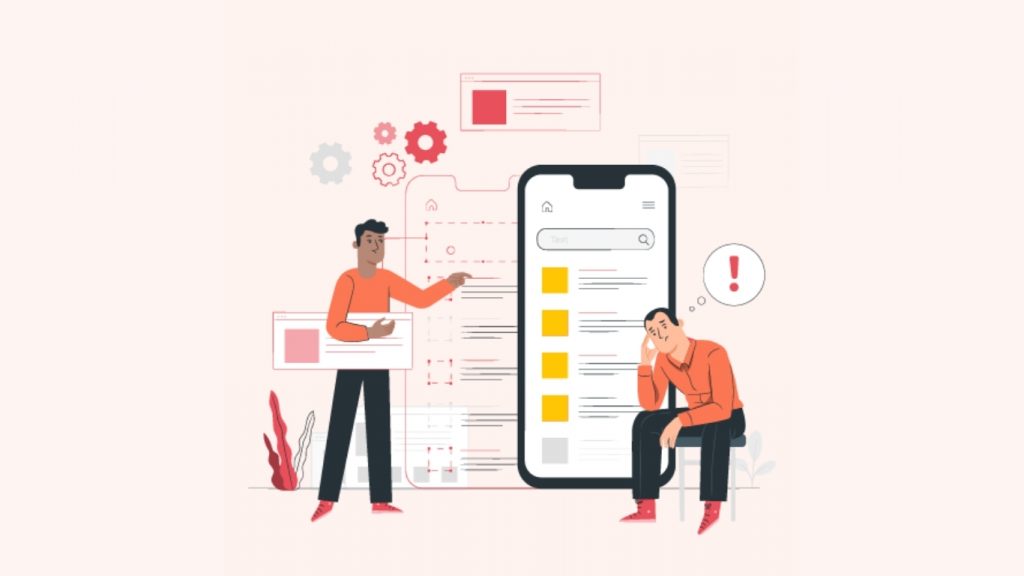
Tools and Templates for Mobile App Project Planning
Choosing the right tools is essential for visualizing your roadmap, organizing tasks, and keeping your team aligned. Modern project-management platforms make planning more efficient and give you real-time insight into progress and bottlenecks.
Tools such as Jira, Notion, ClickUp, and Trello are widely used for mobile app development projects. They offer customizable boards, backlog management, sprint planning, Gantt charts, and reporting dashboards.
Using templates—such as sprint roadmaps, product timelines, feature prioritization matrices, and Gantt charts—helps teams maintain clarity and consistency. Many platforms offer ready-to-use templates tailored for startups, agencies, and enterprise-level teams.
You can also download specialized roadmap templates for MVP planning, user flow diagrams, and multi-phase enterprise development schedules to speed up your planning process.
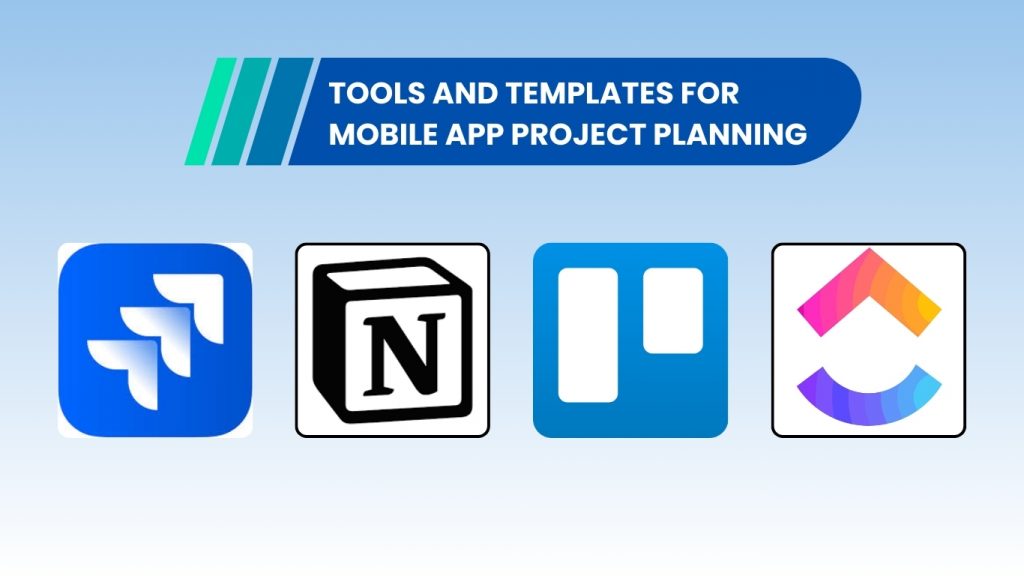
Frequently Asked Questions
What is the difference between a project plan and a roadmap?
A roadmap provides a high-level strategic overview of goals, priorities, and development direction. A project plan is more detailed, outlining tasks, timelines, resources, and execution steps.
How long does it take to develop a mobile app?
Most mobile apps take 3–9 months to build, depending on complexity, features, team size, and platform choice. Larger enterprise apps may require 12 months or more to develop.
How do I choose the right platform for mobile app development?
Select an option based on your target audience, budget, performance needs, and desired user experience. iOS is often preferred for high-income markets, Android for global reach, and cross-platform for faster development.
Where can I find an example of an app development project plan?
You can find templates and real project examples on platforms like Notion, ClickUp, Jira Marketplace, and product-management blogs. Many agencies also publish downloadable sample plans.
How do I create a Gantt chart for a mobile app development project?
You can create a Gantt chart using tools like ClickUp, Jira, Microsoft Project, or Notion by listing tasks, assigning dates, defining dependencies, and visualizing them across a timeline.
A well-structured mobile app development project plan is essential for turning great ideas into high-performing, user-centric applications. By combining thoughtful design, strategic planning, and reliable execution, businesses can create mobile experiences that truly stand out in today’s competitive market. As technology and user expectations evolve, investing in a clear, efficient, and scalable development roadmap becomes more important than ever. Whether you’re refining an existing app or building a new one from scratch, the right guidance can make all the difference.
For organizations seeking to develop a robust mobile app development project plan and create high-quality applications, TOT is your trusted partner, offering end-to-end design and development solutions from concept to launch.
TOT is a pioneer in the digital transformation journey. We deliver website design, mobile app development, and custom software solutions with flexible services tailored to each business’s exact needs.
Inspired by the philosophy of “Technology for People,” TOT empowers businesses to operate more efficiently, elevate customer experiences, and build a lasting brand impression.
TopOnTech (TOT) Contact Information:
🌐 Website: https://topon.tech/en/
📞 Hotline/WhatsApp/Zalo: (+84) 906 712 137
✉️ Email: long.bui@toponseek.com
🏢 Address: 31 Hoang Dieu Street, Ward 12, District 4, Ho Chi Minh City, Vietnam
